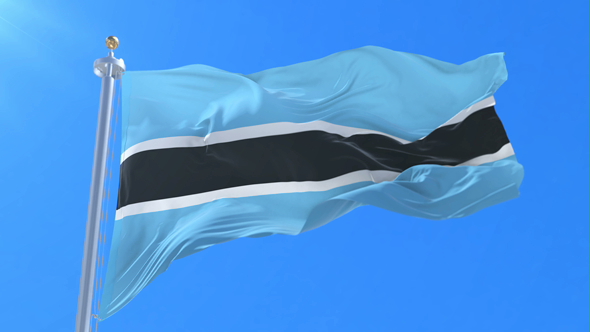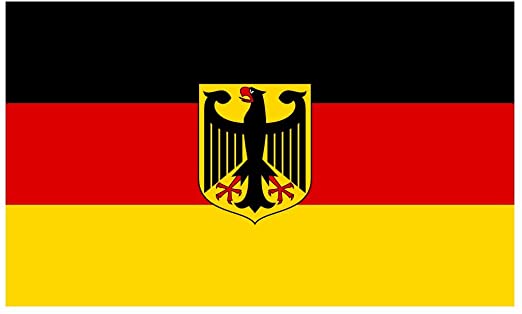The word ‘flag’ is derived from the old Saxon word which means to fly or to float in the air. The shapes, the colours, everything which is used in the flag has a meaning and significance which might include the country’s history and its glory.
Like India’s flag; the ‘tricolour’ as we call it, has a symbolic meaning behind the three colours and the blue wheel. The saffron represents the powerful strength, the white indicates truthfulness along with the dharma chakra, and the green signifies the fertility and the growth of the nation.
Let us read about 5 other flags which were designed with unique meaning and symbolism behind them
1. Botswana

This country in South Africa is demarcated by the Kalahari Desert and the Okavango Delta. But what if you define it by their flag? It is blue in colour with a black stripe in the centre within a thin, white frame.
Before we get into the intricacies of the flag, let us look at the history. The flag was adopted in 1966, the year when the country got its independence, purely symbolising the essence of the country.
Botswana suffers from droughts, which makes rain a very precious resource for the people living there. This is signified by the light blue colour of the flag, also referring to the motto on the coat of arms of Botswana, known as ‘Pula’. Water being the most essential part of life, without which survival is difficult. The black and white stripes represent the zebra, the national animal of Botswana, which also represent the harmony between the two different races residing in the country, thus promoting diversity and combatting racial discrimination.
2. Vietnam

Vietnam is a Southeast Asian country on the South China sea. It is known for its two beautiful cities - Hanoi and Ho Chi Minh. It is also known for the symbolic meaning which the flag of Vietnam depicts. Adopted on 5 September, 1945 the flag of the country is also known as the ‘flag with a gold star’.
The flag was designed by Nguyễn Hữu Tiến (or Lê Quang Sô) and is red in colour symbolising the goals of social revolution and the country’s fight for their freedom. Intellectuals, farmers, workers, businessmen and military personnel represent the 5 points of the star in the flag. It epitomises the connectivity between the classes and their working together to build socialism within and around.
3. Argentina

The flag of Argentina was designed by a politician and revolutionary military leader, Manuel Belgrano, during the Argentine War of Independence. The triband is divided equally into three parts- end being light blue and the middle band in white. The blue colour in the flag denotes the country’s clear skies and the white colour denotes the snow of the Andes. This forms the Ornamental Flag (Bandera de Ornato) of Argentina.
But if you see, there is a sun with a human face on the white band which represents the ‘Sun of May’, bearing features of the Inca, the Sun God which indicates Argentina's independence. This flag with the sun is the Official Ceremonial Flag (Spanish: Bandera Oficial de Ceremonia). As an honour to Belgrano, Argentina celebrated National Flag Day on 20 June every year.
4. Bangladesh

The national flag of Bangladesh was officially adopted on 17 January, 1972 just after the country gained its independence from Pakistan. The current version of the flag is similar to the previous one which was designed by a section of student leaders of ‘Swadheen Bangla Nucleus’.
It is bottle green in colour with a red circle in between. The bottle green colour represents the secularism that Bangladeshis’ behold. It also represents the rich vegetation of the country, while the red circle depicts the blood of the freedom fighters who fought for the country’s independence. It is a clear illustration of the sun rising in a free country.
5. Germany

From 1919 to 1933, when Germany was known as the Weimar Republic, the official flag of the country was hoisted for the first time. Then the country was attacked by the conservatives, monarchists, and the far right, who referred to the colours of the flag with spiteful nicknames such as Schwarz–Rot–Gelb (black–red–yellow). The Frankfurt Parliament had declared black-red-gold as the official colours of the German Confederation. While Red symbolised the Hanseatic League (the north German towns and German merchant communities), black represented Austria.
There are various beliefs regarding the colours of the flag. Some say that the flag represents the colours of the black eagle, with a red beak and claws that can found on the coat-of-arms of German’s Holy Roman Empire. It is also suggested that during the Liberation war, the soldiers wore black tunics with red facings. However, none of these views have been validated.

The plain flag with the tricolour is used as the German civil flag and civil ensign. While the tricolour with the Federal shield in the middle is the official government flag.

